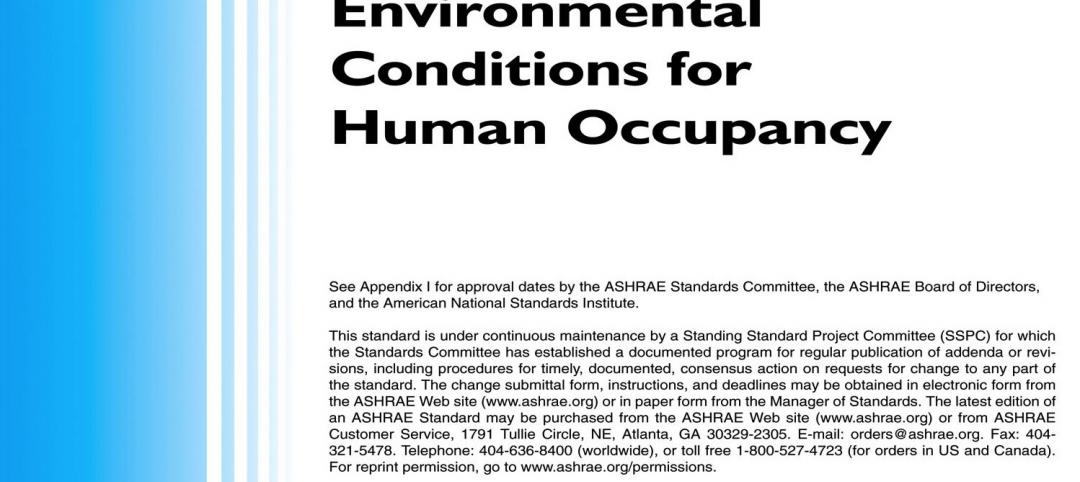The American Concrete Institute’s completely reorganized ACI 318-14, “Building Code Requirements for Structural Concrete and Commentary,” is open for public review for a 45-day period.
“Members of ACI Committee 318 have been actively working on this completely reorganized Code for over 10 years, and have collectively dedicated over 96,000 work hours to improve its usability and increase confidence among all Code users,” said Randall W. Poston, Ph.D., P.E., S.E., Chair, ACI Committee 318. “The committee encourages Code users and those interested in ACI 318 to visit the web portal at www.concrete.org/ACI318, download and review the complete draft of ACI 318-14, and provide the Institute with insight and comments for further improvements by June 17, 2014.”
ACI 318-14 has been reorganized for greater ease of use and to address design requirements for specific member types, such as beams, columns, walls, and diaphragms. All design provisions for a specific member type are contained within a single chapter. The committee also enhanced the readability of the document.
Many lengthy provisions were parsed into multiple shorter provisions addressing single requirements, and several provisions were defined using tables. The increased use of graphs and tables instead of text provides clearer presentation of the information. Code language was edited for consistent use of terms and symbols.
Significant highlights of the new ACI 318 include:
· Improved language and style consistency
· Improved logic and flow of information
· Member-based organization to quickly locate relevant code information
· Construction requirements centralized in one chapter
The 2014 edition of ACI 318-14 “Building Code Requirements for Structural Concrete” is expected to be available in fall 2014, and be referenced in the 2015 edition of the International Building Code.
Related Stories
| Dec 26, 2013
OSHA may require companywide reporting of injuries and illnesses
The Occupational Safety and Health Administration is considering a change in policy that would require organizations to submit company-wide data on illnesses and injuries.
| Dec 26, 2013
USGBC recognizes Ohio for achieving 100th LEED-certified public school
The U.S. Green Building Council (USGBC) has recognized the state of Ohio and the Ohio School Facilities Commission (OSFC) on the LEED certification of the 100th public school building in the state.
| Dec 26, 2013
WDMA launches project to create ISO-compliant architectural doors
WDMA's National Architectural Door Council has initiated a project to create ISO-compliant Product Category Rules for architectural wood flush and stile and rail doors
| Dec 19, 2013
Defense Department okays Green Globes standard for DoD facilities
The Green Globes certification program from the Green Building Initiative can be used for the renovation and construction of Department of Defense facilities following agency endorsement.
| Dec 19, 2013
New York City proposal may boost standards for crane maintenance
New York City may boost maintenance standards for cranes operating in the city, including the addition of load cycle counters to record data regarding every lift that a crane performs.
| Dec 19, 2013
Lawmakers say EPA’s Energy Star standards lack transparency
A bipartisan group of lawmakers is raising concerns that the Environmental Protection Agency has not been transparent in drafting energy-efficiency standards under the Energy Star program.
| Dec 18, 2013
ASHRAE publishes 2013 thermal comfort standard
Major revisions for design and measurement of comfortable spaces are included in a newly published ASHRAE 2013 thermal comfort standard.
| Dec 11, 2013
Texas to require architects to be fingerprinted to get licensed
Starting January 1, 2014, architects who apply for an occupational license in Texas will have to share their fingerprints with the state.
| Dec 11, 2013
Province of Ontario is reviewing bill to require timely payments to contractors
Legislation is under review in the Province of Ontario that would mandate timely payments to contractors.
| Dec 11, 2013
Federal design-build proposal could make it easier for small businesses to land government contracts
The Design-Build Efficiency and Jobs Act, a bill pending in the U.S. House of Representatives, would streamline the bid and proposal process by requiring government agencies to use a two-step process when seeking design-build contracts for projects worth more than $750,000.













